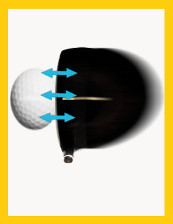
Spring-Like Effect in Golf
Golf is a sport that requires precision and technique. One of the factors that contribute to a successful golf shot is the interaction between the clubface and the golf ball upon impact. One term associated with this interaction is the “Spring-Like Effect,” also known as the “trampoline effect” or the “Coefficient of Restitution (COR).” Let's delve deeper into understanding this term.
- The Spring-Like Effect refers to the energy transfer that occurs when the clubface strikes the golf ball.
- The COR is a measure of how efficiently the energy is transferred from the clubhead to the golf ball.
This effect is crucial as it directly impacts the distance the ball will travel and how it responds upon landing. Golfers aim to maximize the Spring-Like Effect to achieve greater distance and control in their shots. Here's a breakdown of the factors influencing this phenomenon:
- Clubhead Design: Modern golf clubs are designed to optimize the Spring-Like Effect. Manufacturers use various techniques to increase the COR by altering variables such as face thickness, material composition, and clubface structure.
- Driver: The Spring-Like Effect is most noticeable in drivers due to their larger clubfaces and thinner structures. The trampoline effect helps generate higher ball speeds and, therefore, longer distances off the tee.
- Golf Ball: Golf balls also play a role in the Spring-Like Effect. Manufacturers design golf balls with different levels of compression to match the clubfaces' elastic properties. A softer golf ball will deform more upon impact, increasing the Spring-Like Effect, while a firmer ball will have a lower COR.
- Rules and Regulations: The USGA (United States Golf Association) and the R&A (Royal and Ancient Golf Club of St Andrews) have set limits on the COR to maintain fairness in the game. The maximum COR allowed for clubs is 0.83, meaning the ball can rebound with 83% of the incoming kinetic energy.
Golfers must understand that the Spring-Like Effect has its limitations and can't be relied upon solely for distance. Factors such as swing speed, launch angle, spin rate, and ball placement also play significant roles in achieving optimal results. Therefore, a golfer's skill and technique are equally essential.
In conclusion, the Spring-Like Effect, also known as the trampoline effect or the COR, is a critical aspect of golf. It refers to the energy transfer that occurs when the clubface strikes the golf ball. Golfers and manufacturers strive to optimize this effect to achieve greater distance and control. However, it's essential to consider other factors, such as ball placement and swing technique, to ensure successful shots on the course.





